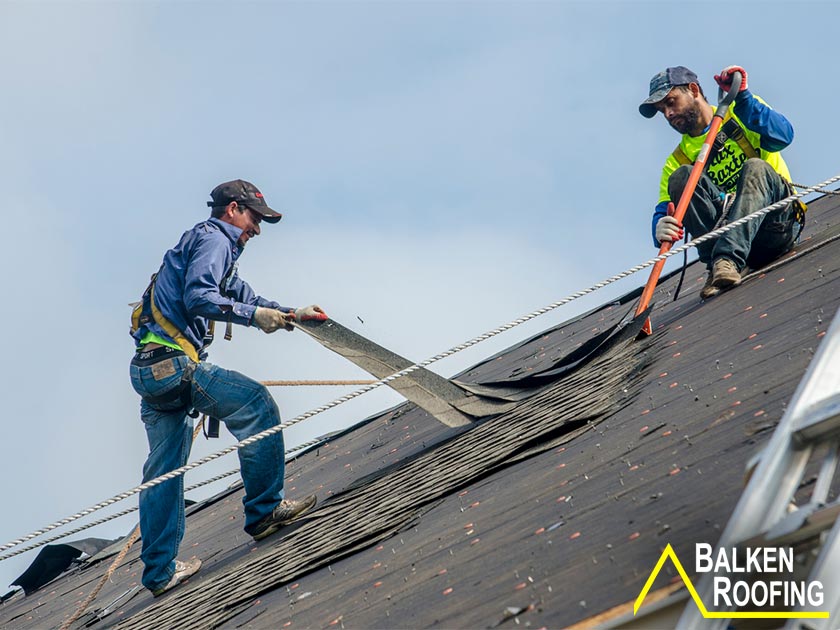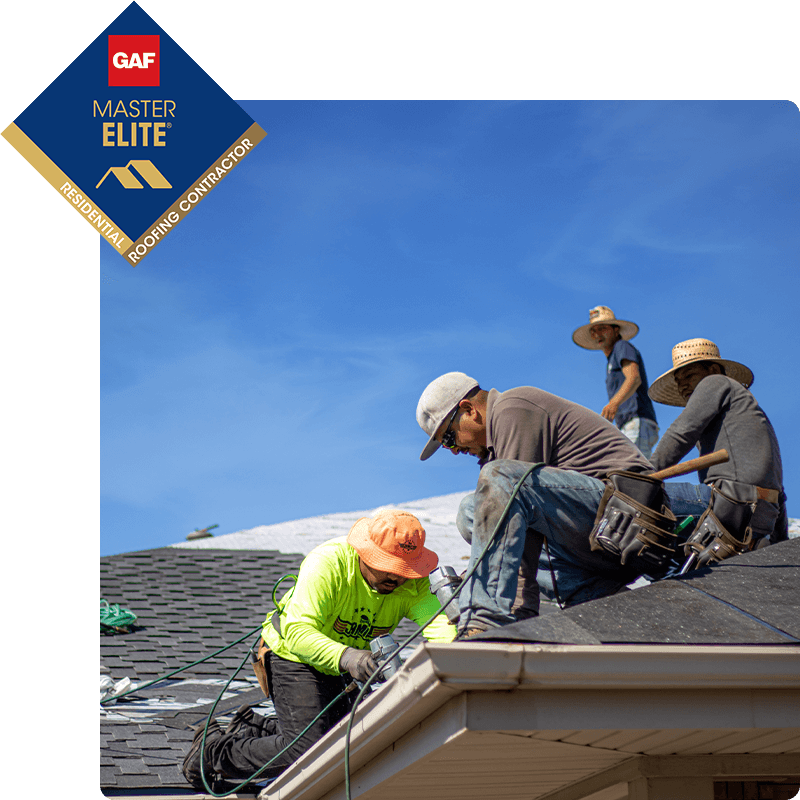The Ultimate Guide to Hiring a Siding Contractor in Ann Arbor
The Ultimate Guide to Hiring a Siding Contractor in Ann Arbor
Blog Article
How Climate Condition Can Impact Your Roof Covering Durability
Your roofing system deals with constant difficulties from the climate, and it's essential to recognize how these conditions can reduce its lifespan. Each aspect plays a function in your roof covering's durability, but exactly how can you successfully prepare for these risks?
The Results of UV Rays on Roof Products
Although you might not think of it frequently, UV rays can significantly affect the life-span of your roof covering materials. When your roof covering is revealed to sunshine, those hazardous rays can trigger considerable damages gradually. As an example, UV radiation breaks down the chemical bonds in products like asphalt tiles, leading to breaking, fading, and wear and tear. This destruction damages your roof and makes it much less reliable at shielding your home (Roofer Novi).
Routine inspections additionally help capture early indications of damage, permitting you to deal with concerns before they rise. By staying proactive concerning UV exposure, you'll prolong the life of your roof and improve your home's overall toughness.
Just How Too Much Rainfall Can Bring About Roofing System Damages
While UV rays can weaken your roofing system, too much rainfall positions an additional significant hazard to its honesty. When heavy rains take place, water can pool on your roofing, resulting in possible leakages and structural damage gradually. If your roofing products aren't created to handle prolonged exposure to dampness, they can degrade faster than anticipated.
Stopped up rain gutters can worsen these concerns, triggering water to overflow and seep right into your home. You could see stains on your ceilings or walls, indicating that water is discovering its method inside. In addition, standing water can advertise mold and mildew development, which not just harms your roof covering however can also affect your indoor air quality.
To protect your roof, validate your water drainage systems are clear and working correctly. Routine assessments can help you identify vulnerable points before they transform right into pricey fixings, maintaining your roofing healthy even during hefty rains.
The Effect of Snow and Ice Build-up
When snow and ice stack up on your roofing, you may not recognize the stress it puts on the structure. That included weight can bring about severe problems like roof drooping or also collapse. And also, ice dam development can trap water, causing leakages and more damages to your home.
Snow Tons Stress
As winter season coverings your home in snow, the weight of accumulated ice and snow can put significant anxiety on your roof. You might not recognize just how quickly snow can build up, particularly during hefty storms, so it's vital to maintain an eye on the weight your roof is supporting. Furthermore, comprehending your roof covering's structure and its snow tons score can educate you about when to take action.
Ice Dam Formation
Ice dam development can become a considerable problem throughout wintertime, particularly when snow builds up on your roofing and temperatures change. When warmth runs away from your home, it thaws the snow on your roof covering, creating water to move down. As this water gets to the colder eaves, it ices up, developing a dam that prevents additional drainage. Over time, this trapped water can seep under tiles, resulting in leaks and considerable damages to your roof structure. To stop ice dams, ensure your attic room is properly shielded and aerated. You must also regularly eliminate snow build-up from your roof covering. By taking these precautions, you'll assist extend your roof's life-span and prevent costly repairs triggered by ice dam issues.
Temperature level Changes and Their Role in Roofing Degeneration
Temperature changes can seriously impact your roofing system's lifespan. As materials increase and contract with heat and chilly, they come to be a lot more vulnerable to splits and damages. Additionally, freeze-thaw cycles can aggravate these problems, resulting in more degeneration over time.
Thermal Growth Results
When temperatures fluctuate, your roofing can undergo considerable thermal development and contraction, which may cause worldly tension and deterioration with time. As the sun warms your roof covering during the day, materials increase; when temperature levels drop during the night, they get. This consistent cycle can create weak areas, specifically at joints and joints. You might observe splits, bending, or loose shingles consequently. These concerns can lead to leakages and pricey repair services if left uncontrolled. To alleviate damages, think about using roof materials developed to hold up against these temperature level changes. Normal inspections can additionally aid you capture very early indicators of wear, ensuring your roofing system continues to be reliable and long lasting in securing your home.
Freeze-Thaw Cycles
As winter season sets in, the freeze-thaw cycles can inflict chaos on your roof. As it freezes, it expands, placing tremendous stress on your roof products.
Disregarding hop over to here these problems can bring about more substantial issues, including leaks and structural damage. To guard your roofing system, it's important to inspect it regularly, specifically after severe weather. Resolving small concerns quickly can aid extend the life of your roofing, guaranteeing it holds up against the rough effects of freeze-thaw cycles throughout winter months.
Moisture Levels and Their Impact on Roof Covering Stability
While lots of people concentrate on temperature level changes, moisture levels play a vital duty in determining the honesty of your roof. High moisture can produce a wet setting that urges mold and mildew, algae, and mildew development, every one of which can compromise roof covering materials with time. If your roofing system's air flow isn't ample, moisture can get caught, bring about wood rot and other architectural concerns.
Alternatively, low moisture can result in completely dry conditions, causing materials like shingles find out here now to become breakable and fracture. This brittleness can make them extra at risk to damage from various other weather condition aspects.
To preserve your roof's stability, it is necessary to keep an eye on moisture levels and ensure appropriate ventilation. Normal evaluations and maintenance can aid recognize prospective issues before they come to be substantial troubles. Maintaining your roofing in good condition suggests being proactive concerning moisture results, ultimately extending its life-span and shielding your home.
Wind Damage: A Silent Risk to Your Roof Covering
Moisture isn't the only climate variable to consider; wind damage can calmly threaten your roof covering's honesty. Strong winds can raise roof shingles, loosen up blinking, and also detach whole sections of your roof covering. You may not see these problems instantly, but in time, they can bring about considerable leaks and architectural damages.
If you stay in a location vulnerable to high winds, it is very important to watch on your roof after tornados. Evaluate for any missing out on or damaged roof shingles and inspect the sides where the roof covering fulfills other surfaces. Roof Contractors. Focus on any kind of debris that might have gathered, as this can catch wetness and intensify damage
Neglecting these indications could save you time now, but it could cost you more in the lengthy run. A proactive approach to wind damage can help ensure your roof continues to be protected and strong, extending its life expectancy and protecting your home.
Preparing Your Roofing for Extreme Weather Condition Occasions
When preparing your roofing for severe weather events, it's essential to assess its current problem and make necessary upgrades. Begin by inspecting for missing or harmed roof shingles, as these can cause leakages throughout hefty rain or snow. Change any kind of endangered products to assure a solid structure.
Following, check the blinking around skylights, chimneys, and vents. Properly sealed blinking protects against water from leaking in, which can trigger substantial damages.
Think about strengthening your roofing system's framework, specifically if your area is susceptible to high winds Read Full Report or heavy snowfall. Mounting impact-resistant shingles can include an additional layer of defense.
Lastly, clear gutters and downspouts to advertise correct water drainage. Clogged rain gutters can lead to ice dams or roofing system leakages. By taking these positive steps, you'll aid prolong your roofing system's life-span and decrease potential damage throughout severe weather condition occasions.

Frequently Asked Inquiries
Exactly how Typically Should I Inspect My Roofing System for Weather Damage?

Can I Fix Roofing Damages Triggered By Climate Myself?
Yes, you can fix roofing system damages brought on by weather condition on your own if you have the right tools and skills. Simply make sure you prioritize safety and security, assess the damage thoroughly, and comply with proper repair service techniques to prevent future problems.
What Roof Covering Materials Are Ideal for Extreme Climate?
For severe weather condition, think about metal, slate, or impact-resistant tiles. These materials stand up to heavy winds, hail storm, and snow far better than others. You'll guarantee your roof covering lasts longer, safeguarding your home from extreme elements successfully.
How Does Climate Adjustment Affect Roof Covering Longevity?
Environment adjustment accelerates wear on your roofing, creating materials to break down quicker. Raised temperature levels and serious tornados can result in more regular repair services. You'll require to contemplate resilient options to guarantee your roofing lasts much longer.
Should I Think About a Roof Covering Guarantee for Weather-Related Issues?
Yes, you should most definitely think about a roof covering service warranty for weather-related issues. It shields you versus unforeseen damage, guaranteeing your financial investment continues to be safe. Plus, it supplies comfort throughout uncertain climate condition.
How Too Much Rainfall Can Lead to Roofing System Damages
When hefty rains occur, water can merge on your roof covering, leading to potential leakages and architectural damages over time.Moisture isn't the only climate element to contemplate; wind damages can quietly intimidate your roofing system's honesty. By taking these positive steps, you'll aid prolong your roof covering's life expectancy and minimize prospective damages throughout extreme weather condition occasions.
Can I Repair Roof Damages Caused by Climate Myself?
Report this page